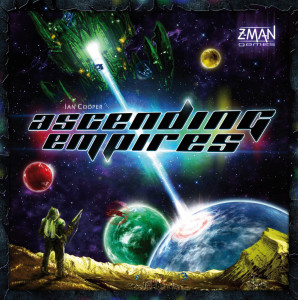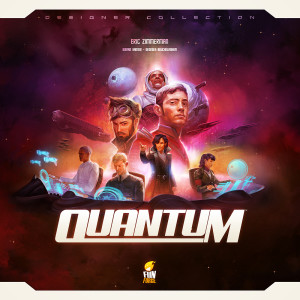- Learning time
- 60 minutes
- First play time
- 120 minutes
Pulsar 2849
Designed by: Vladimír Suchý
Pulsar 2849 is – you guessed – set in the far-distant future. Players are competing to establish stations on planets and set their gyrodynes spinning around pulsars in space. Develop technologies, build transmitters… all through the galactic medium of… dice!
The board shows the routes players spaceships can take around the galaxy, and the planets and pulsars to be found there. Over eight rounds, dice are rolled and players take two dice each use them to take actions. The actions can be used for the aforementioned technologies and transmitters, which score points or give you a minor boost in some way. Or, you can move your spaceship: the number on the die dictates how many stages you can shuffle your ship around the board, building stations in planets as you pass by, and if you end your movement on a planet, you get a bonus for doing so. If you end your movement on a pulsar, you can start construction on a gyrodyne there: thematically, this is in order to generate power, but what you personally get from gyrodynes is points: every one you construct earns you points for every round for the rest of the game.
The technologies and transmitters are also ways to either score points or advance your game in some way. Ignore these at your peril, because transmitters in particular can give you income at the end of every round!
The catch at the heart of the game, though, is that the dice you choose in each round advance your position on one of two tracks: both are crucial – turn order dictates who chooses dice first, so being last to choose is not a good place to be in. Income dictates who gets the most engineering cubes at the end of each round. What the cubes engineer for you is extra turns: four cubes can buy you an extra turn, and in game of only eight rounds having these can be a big swing.
Once you’re familiar with the game you can introduce the individual player headquarters too, which allow you actions nobody else can take! These include the rather quirky gate runs, where you score points for flying your ship particular routes on the board…
The guru's verdict
-
Take That!
Take That!
There's no combat in Pulsar, but it's possible to take dice other players want. Half the time this happens inadvertently anyway!
-
Fidget Factor!
Fidget Factor!
It *really* depends who you play with. Though it looks like a rule-heavy behemoth at first, the game is deceptively simple and over the 8 rounds you'll take - at most - 24 actions. Usually less. But...
-
Brain Burn!
Brain Burn!
...the options on offer are plentiful, and for some deciding what to do on each round may cause the game to move slowly.
-
Again Again!
Again Again!
But all these options do mean the game has a lot of replayability - the board is two-sided, as are the headquarters, and there are various technologies to mix and match for each game.


















Sam says
As long as I'm playing with folk who aren't prone to analysing to the nth degree, I really enjoy Pulsar. Taking dice and doing stuff with them is hardly a new thing in games - but the dice selection and turn order being so crucial is a really neat twist. If you love a space theme, there are some games that are more immersive: Eclipse, Leaving Earth or High Frontier, for instance. But despite some fairly abstract elements, Pulsar still wears its theme pretty well.